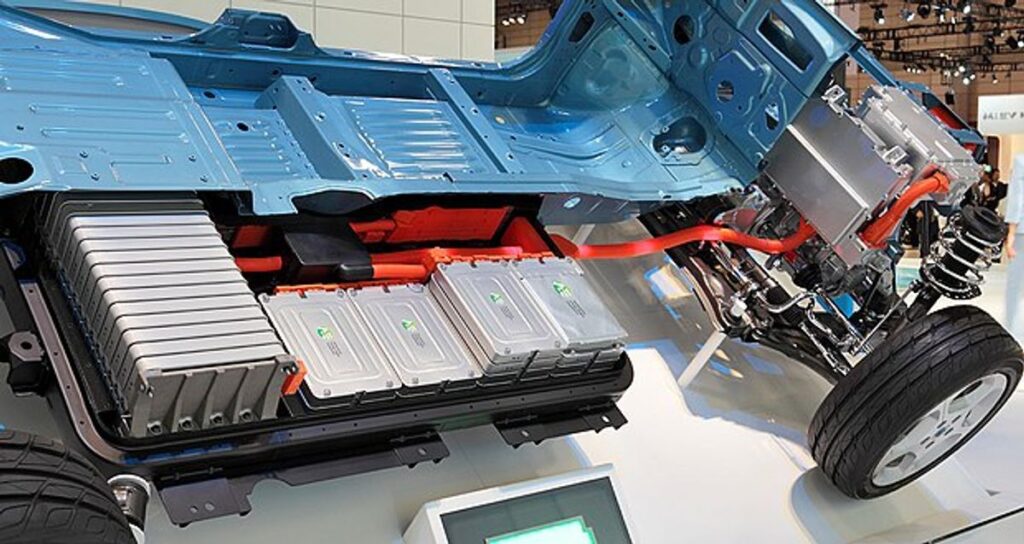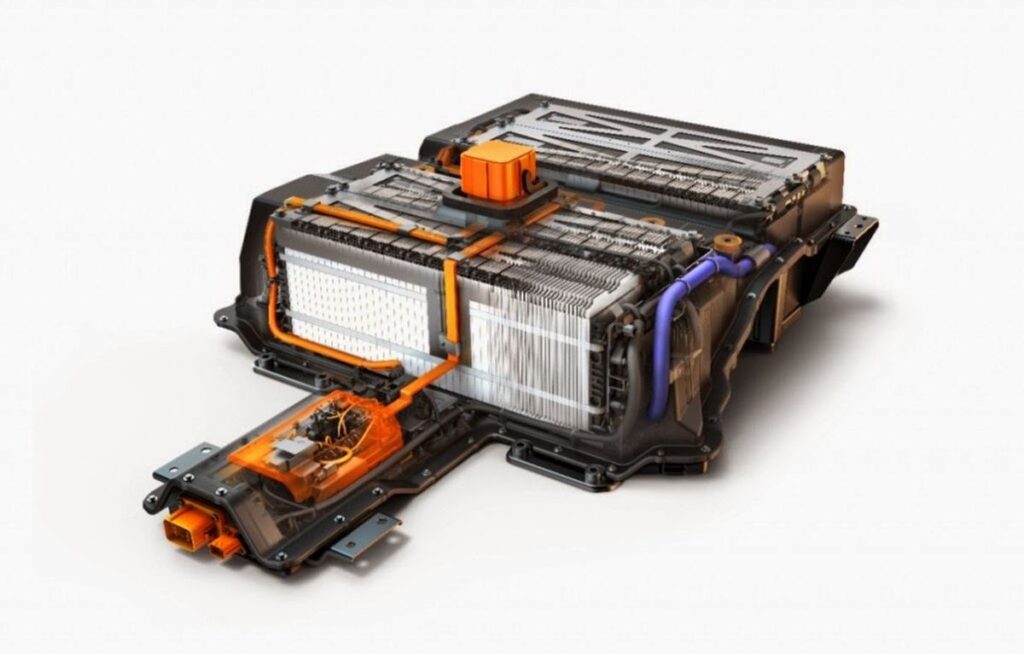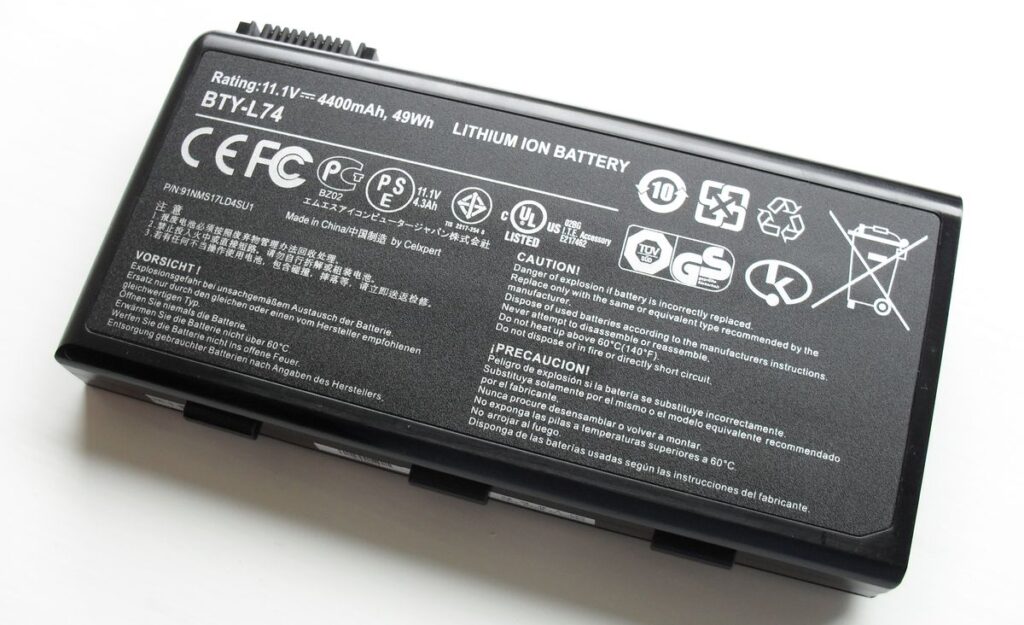In the rapidly advancing world of automotive technology, the lithium automotive battery has emerged as a cornerstone for modern electric vehicles (EVs). Their unique properties and continuous improvements in energy density, safety, and longevity are pivotal in the evolution of electric mobility. This article delves into the critical role that lithium-ion batteries play in optimizing the performance of modern vehicles, examining the technological advancements, safety considerations, competitive landscape, and the quest for extended range and efficiency.
Key Takeaways On The Lithium Automotive Battery
- The lithium automotive battery is crucial for the safe and optimal operation of EVs, with testing and safety protocols essential for mitigating risks.
- Technological innovations, including the use of nanomaterials and advancements in battery composition, are enhancing battery performance and efficiency.
- The competitive edge in the EV market is heavily influenced by the performance of lithium-ion batteries, with manufacturers like Tesla and Nissan leading the way.
- Sustainability and environmental responsibility are becoming increasingly important in battery manufacturing, influencing the industry’s direction towards greener solutions.
- The future of electric vehicles is closely tied to the development of lithium batteries, with extended range and improved energy analysis being key focus areas for research and innovation.
Advancements in Lithium-Ion Battery Technology

The evolution of the lithium automotive battery
Since their commercial debut in 1991, lithium-ion batteries have undergone significant transformations, becoming more efficient and integral to our daily lives. The journey from the early 12v lithium-ion battery to the sophisticated lithium-ion car battery of today illustrates the remarkable progress in energy storage technology.
Key advancements include:
- Improved energy densities
- Enhanced safety features
- Reduction in production costs
The evolution of the lithium automotive battery is marked by continuous innovation, as researchers relentlessly pursue higher performance and reliability.
With each generation, these batteries have become more capable, powering a wide range of applications from portable electronics to electric vehicles. The shift from the conventional 12v lithium-ion battery to the more robust lithium-ion car battery is a testament to the scalability and adaptability of this technology.
Innovations in Lithium Automotive Battery Composition and Design
The relentless pursuit of higher energy density and capacity in lithium automotive batteries has led to significant innovations in battery composition and design. Advances in materials science have been pivotal, enabling the development of new electrode and electrolyte materials that offer improved performance and longevity.
- Cathode advancements include the use of layered oxide materials and phospho-olivines, which enhance energy storage capabilities.
- Anode improvements have seen the introduction of silicon and graphite composites, increasing the battery’s ability to hold a charge.
- Electrolyte innovations, such as solid-state electrolytes, promise increased safety and energy density.
The integration of novel composite separators and the optimization of electrode thickness are critical factors that contribute to the high power density of modern lithium-ion batteries.
The table below summarizes the impact of these innovations on battery performance:
| Innovation | Benefit |
|---|---|
| New Cathode Materials | Higher Energy Storage |
| Anode Composites | Improved Charge Capacity |
| Solid-State Electrolytes | Enhanced Safety & Density |
| Composite Separators | Increased Power Density |
These advancements not only enhance the performance of lithium automotive batteries but also pave the way for the next generation of electric vehicles, where range, efficiency, and safety are paramount.
The Impact of Nanomaterials on Lithium Automotive Battery Performance
The integration of nanomaterials into lithium-ion batteries has marked a significant milestone in the quest for high-performance energy storage solutions. Nanomaterials, due to their high surface area and unique properties, have been shown to enhance the electrical conductivity and structural integrity of batteries. This advancement not only improves the energy density but also contributes to the longevity and charge rates of modern lithium automotive batteries.
The use of nanomaterials in lithium automotive battery technology is not just a theoretical enhancement but a practical step towards more efficient and durable energy storage systems.
Recent studies have demonstrated the potential of various nanomaterials, such as carbon-coated graphite and silicon nanowires, to increase the performance metrics of lithium-ion batteries. The table below summarizes the impact of different nanomaterials on battery performance:
| Nanomaterial | Benefit | Impact on Performance |
|---|---|---|
| Carbon-coated graphite | Improved anode stability | Higher charge capacity |
| Silicon nanowires | Increased anode capacity | Enhanced energy density |
| Carbon nanotubes | Better electrical conductivity | Faster charge/discharge rates |
These enhancements are crucial for the automotive industry, where the demand for longer-range and faster-charging electric vehicles continues to grow. By leveraging the properties of nanomaterials, manufacturers can design batteries that not only meet but exceed the expectations of modern consumers.
Ensuring Safety and Reliability in Electric Vehicles

The Importance of Rigorous Battery Testing
The rigorous testing of lithium-ion batteries is a cornerstone in the development of safe and reliable electric vehicles. Ensuring that each battery meets stringent safety and performance standards is not just about compliance; it’s about protecting consumers and solidifying brand trust.
Safety tests are designed to prevent overcharging and to withstand mechanical abuse, examining internal temperatures, energy densities, and material compositions. Performance tests, on the other hand, are aimed at ensuring batteries can deliver the required power over their intended lifespan, giving manufacturers a competitive edge.
The meticulous process of battery testing is pivotal in identifying and mitigating risks, leading to the development of robust safety protocols and the advancement of electric vehicle technology.
Lithium automotive battery testing not only addresses immediate safety concerns but also contributes to the industry’s evolution, providing trusted energy storage solutions. With the continuous improvement of testing techniques and technologies, the future of electric vehicle batteries looks both safe and promising.
Mitigating Risks with Advanced Safety Protocols
Ensuring the safety of lithium automotive batteries is paramount, as the consequences of battery failure can be severe. Manufacturers are dedicated to mitigating these risks through comprehensive testing and advanced safety protocols. These tests are designed to prevent overcharging, thermal runaway, and the effects of mechanical abuse, which are critical in maintaining the integrity of the battery and the safety of the vehicle.
The rigorous safety testing protocols include assessing the battery’s internal temperature, energy density, and the materials of the anode and cathode. This scrutiny helps to identify any potential malfunctions that could lead to hazardous situations.
To further enhance safety, batteries are equipped with Battery Control Systems (BCS) that feature micro-protection mechanisms for temperature, voltage, and current. The BCS closely monitors the cells and can rest them as necessary to mitigate degradation and extend battery life. The table below summarizes the key aspects of safety testing:
| Test Category | Purpose | Outcome |
|---|---|---|
| Overcharge Testing | Prevent excessive charge | Battery longevity |
| Mechanical Abuse Testing | Assess durability | Structural integrity |
| Thermal Analysis | Monitor temperature | Prevent thermal runaway |
| Sensor Assessment | Check pressure and temperature sensors | Early malfunction detection |
By implementing these protocols, manufacturers not only ensure the safety of electric vehicles but also contribute to the advancement of lithium automotive battery technology and the trust in energy storage solutions.
Case Studies: Improvements from Battery Testing
The relentless pursuit of excellence in the electric vehicle (EV) industry is exemplified by the meticulous battery testing protocols that have been established. Advanced testing chambers have revolutionized the way lithium-ion batteries are evaluated, leading to significant improvements in both performance and safety. These chambers enable detailed analysis of battery behavior under various stress conditions, ensuring that only the most reliable and efficient batteries make it to market.
In a notable case study, the introduction of new nanomaterials was scrutinized to determine their efficacy in enhancing battery performance. The results were promising, indicating a potential leap forward in battery technology.
Manufacturers are not only focused on outperforming rivals but also on ensuring the utmost safety. Comprehensive testing is conducted to mitigate risks such as fires and explosions, which are inherent dangers when dealing with energy-dense lithium-ion batteries. The table below summarizes the key areas of focus during battery testing:
| Test Category | Description |
|---|---|
| Performance | Assessing energy output and efficiency |
| Longevity | Evaluating lifespan and degradation rates of the lithium automotive battery |
| Safety | Preventing overcharging and mechanical abuse |
These advancements in battery testing are not just about pushing the boundaries of what’s possible; they are about delivering the promise of safer, more reliable, and longer-lasting batteries for the next generation of electric vehicles.
The Competitive Landscape of Electric Vehicle Batteries

Benchmarking Performance: Tesla, Nissan, and Others
In the race to lead the electric vehicle (EV) market, battery performance is a critical factor that distinguishes one manufacturer from another. Companies like Tesla, Nissan, LG Chem, and CATL are constantly refining their battery technologies to deliver superior range, durability, and charging speed.
| Manufacturer | Annual Production Capacity (GWh) |
|---|---|
| LG Chem | 20-30 |
| CATL | 30-40 |
| Panasonic | 15-25 |
| Samsung SDI | 15-20 |
| Tesla | 10-20 |
The competitive edge in the EV market is increasingly defined by the optimization of lithium automotive battery performance. Manufacturers are investing in advanced testing and thermal management systems to ensure their batteries can withstand the demands of modern electric vehicles.
While Tesla is renowned for its innovation and market presence, other manufacturers like Nissan have also made significant strides in lithium automotive battery technology. The focus on optimizing EV performance has led to the development of sophisticated battery thermal management systems, which are crucial for maintaining battery health and efficiency.
The Role of Lithium Carbonate in Next-Generation Batteries
Lithium carbonate stands as a fundamental component in the evolution of lithium automotive batteries, playing a crucial role in enhancing energy density, lifespan, and rechargeability. The strategic optimization of lithium carbonate is essential for the development of advanced lithium car battery 12v systems and broader lithium car applications.
As the industry strives for sustainability, the challenges associated with lithium automotive battery carbonate extraction and production are being met with innovative solutions. These efforts are not only aimed at reducing environmental impact but also at streamlining the supply chain to meet the growing demand for electric vehicles.
Ongoing research and development are pivotal in refining lithium carbonate’s role in next-generation batteries. The focus on improving extraction processes and reducing production costs is integral to advancing the performance and efficiency of these power sources.
The table below outlines the key benefits of lithium carbonate in battery technology:
| Benefit | Description |
|---|---|
| Energy Density | Higher capacity for energy storage per unit volume. |
| Lifespan | Extended lithium automotive battery life due to improved stability. |
| Rechargeability | Faster and more efficient charging cycles. |
The continued evolution of lithium automotive batteries is closely tied to the advancements in lithium carbonate utilization. As we push the boundaries of technology, the role of lithium carbonate in powering the next generation of electric vehicles remains undeniably significant.
Sustainability and Innovation in Lithium Automotive Battery Manufacturing
The electric vehicle industry is witnessing a significant shift towards sustainability, with companies like Eco Tree Lithium at the forefront of this transformation. The integration of environmental responsibility with high-performance battery production is not just a goal but a burgeoning reality. This balance is crucial for the widespread adoption of electric vehicles and the overall health of our planet.
In the realm of lithium automotive battery manufacturing, innovation is key to progress. Technological advancements are continuously being made to enhance battery life and efficiency, while also reducing the environmental impact. For instance, the introduction of proprietary technologies such as the Battery Control System™ and Cell Driver™ has shown promise in optimizing battery performance and extending lifespan.
While we cannot completely eliminate battery degradation, the industry’s commitment to innovation suggests a future where management of this issue is more effective than ever.
The table below outlines some of the key areas where innovation is driving sustainability in battery manufacturing:
| Innovation Area | Description |
|---|---|
| Battery Composition | Development of eco-friendly materials that reduce environmental impact. |
| Recycling Programs | Implementation of systems to reclaim and reuse lithium automotive battery components. |
| Energy Efficiency | Advances in technology that increase the energy density of batteries. |
| Lifecycle Management | Improved strategies for extending lithium automotive battery life and reducing waste. |
Extending the Range and Efficiency of Electric Vehicles

Coupling Cost with Energy Analysis for Optimal Performance
In the quest for extended range and efficiency in electric vehicles (EVs), the interplay between cost and energy performance is critical. Optimal performance is not solely about maximizing range; it’s about achieving the best balance between cost and energy efficiency. This balance is crucial for the widespread adoption and economic viability of EVs.
Multi-objective optimization techniques, such as the use of genetic algorithms, have been instrumental in finding this balance. By simultaneously maximizing exergy efficiency and minimizing system costs, researchers can identify the most cost-effective thermal management solutions.
The pursuit of optimal lithium automotive battery performance involves a delicate trade-off between enhancing energy density and managing costs effectively.
For instance, the optimal choice of hybrid cooling systems in battery thermal management systems (BTMS) is a result of such trade-offs. The table below illustrates a simplified example of how different cooling strategies can impact both performance and cost:
| Cooling Strategy | Energy Efficiency | Cost Implications |
|---|---|---|
| Passive Cooling | Moderate | Low |
| Active Cooling | High | Moderate |
| Hybrid Cooling | High | High |
As the lithium automotive battery industry continues to innovate, these analyses will become even more sophisticated, ensuring that EVs not only push the boundaries of technology but also remain accessible to consumers.
The Future of Extended-Range Electric Vehicles
The quest for extended range in electric vehicles (EVs) is a pivotal aspect of the industry’s evolution. The goal to achieve a driving range of over 1000 km on a single charge is becoming increasingly tangible, with advancements in energy density at both the cell and system levels. The United States Advanced Battery Consortium LLC (USABC LLC) has set targets for usable specific energy of 350 Wh/kg (750 Wh/L) at the cell level and 250 Wh/kg (500 Wh/L) at the system level to push the boundaries of EV capabilities.
The synergy between cost and energy analysis is crucial for the development of EVs with extended range. Balancing these factors ensures that the benefits of increased range do not come at an exorbitant price, making long-range EVs more accessible to consumers.
Current benchmarks for EV driving range vary, with most vehicles offering 250 to 350 km per charge. However, some models, like the Tesla Model S and Nissan Leaf, have already surpassed these figures, boasting ranges of 500 km and 364 km respectively. This indicates a clear trajectory towards the realization of ultra-high energy density lithium battery technologies for next-generation long-range EVs.
| EV Model | Current Range (km) | Target Range (km) |
|---|---|---|
| Tesla Model S | 500 | 1000+ |
| Nissan Leaf | 364 | 1000+ |
As we look to the future of the lithium automotive battery, the continuous improvement in driving range, coupled with reductions in cost and enhancements in safety, will be the cornerstone of EV commercial success.
Balancing Performance with Environmental Responsibility
In the quest for optimal electric vehicle (EV) performance, environmental responsibility remains a pivotal consideration. Manufacturers must balance the demand for high-performing batteries with sustainable practices. This includes not only the sourcing of materials but also the end-of-life management of the batteries.
- Sourcing of Materials: Ensuring that the materials used in battery production are ethically sourced and have minimal environmental impact.
- End-of-Life Management: Developing strategies for battery reuse in applications such as stationary energy storage, extending their overall life and reducing environmental impact.
- Recycling and Material Recovery: Focusing on efficient recycling techniques to recover valuable materials from spent batteries, thereby reducing the need for raw materials and minimizing environmental impact.
Optimization of battery design and management is not just about achieving the best performance metrics; it’s also about integrating environmental considerations into every step of the battery’s lifecycle.
When evaluating the lithium automotive battery consumers and manufacturers alike should consider both the performance and the environmental implications. The following table provides a succinct comparison:
| Factor | Performance Consideration | Environmental Consideration |
|---|---|---|
| Cost | Initial purchase price, maintenance costs, warranties | Materials sourcing, recycling processes |
| Thermal Management | Maximizing heat transfer rate, minimizing pumping power | Energy efficiency, minimizing resource use |
| Design Parameters | Optimization for energy, cost, size, arrangement | Sustainable material use, end-of-life strategies |
By adhering to these considerations, the industry can ensure that the advancements in EV technology are not achieved at the expense of our planet’s health.
As we continue to push the boundaries of innovation, the quest for extending the range and efficiency of electric vehicles is at the forefront of our mission. Our advanced lithium batteries are the powerhouse behind this revolution, offering lighter weight, rapid charging, and a longer lifespan. Don’t let outdated technology hold you back. Visit our website to explore our selection of high-energy-density lithium batteries and take the first step towards a more sustainable and efficient future. Power your journey with the best in class – because with us, you’re not just buying a battery; you’re investing in reliability and performance.
Conclusion
As we have explored throughout this article, the lithium automotive battery is at the heart of modern vehicle performance optimization. Their high energy density, longevity, and rechargeable nature make them indispensable in the realm of electric vehicles (EVs). Manufacturers continue to innovate, seeking to enhance battery efficiency and safety through rigorous testing and the adoption of cutting-edge technologies.
The evolution of lithium-ion batteries, including the promising lithium iron phosphate (LiFePO4) variants, underscores the industry’s commitment to sustainability and superior performance. With companies like Eco Tree Lithium leading the charge toward a greener future, the trajectory of automotive battery technology is not only powering our vehicles but also steering us toward a more environmentally responsible world. The ongoing research into nanomaterials and other advancements holds the promise of even greater strides in battery performance, ensuring that the role of lithium batteries in modern vehicles will remain pivotal as we drive into a cleaner, more efficient future.
Frequently Asked Questions
What are the main advantages of lithium-ion batteries in electric vehicles?
Lithium-ion batteries offer high energy density, long life, rechargeable cycles, and stable energy output, making them the preferred choice for electric vehicles due to their efficiency and longevity.
How do advancements in lithium battery technology contribute to vehicle performance?
Advancements in lithium battery technology, such as innovations in battery composition, design, and the introduction of nanomaterials, have led to improvements in battery performance, energy density, and safety, thus enhancing the overall performance of electric vehicles.
Why is rigorous battery testing important for electric vehicles?
Rigorous battery testing ensures the safety and reliability of electric vehicles by identifying and mitigating risks, uncovering potential malfunctions, and guaranteeing that batteries perform optimally over long distances.
How does lithium carbonate affect the future of battery technology?
Lithium carbonate is a key raw material in the production of lithium-ion batteries and its availability and cost can significantly influence the development of next-generation batteries, particularly in terms of energy density and sustainability.
What measures are being taken to ensure the sustainability of Lithium Automotive Battery manufacturing?
Manufacturers are focusing on sustainable practices, such as using eco-friendly materials, improving recycling processes, and innovating in battery design to minimize environmental impact while maintaining performance.
How are electric vehicle ranges being extended without compromising environmental responsibility?
By coupling cost with energy analysis, manufacturers are developing batteries that offer extended range and efficiency while balancing performance with the use of sustainable materials and production methods.

